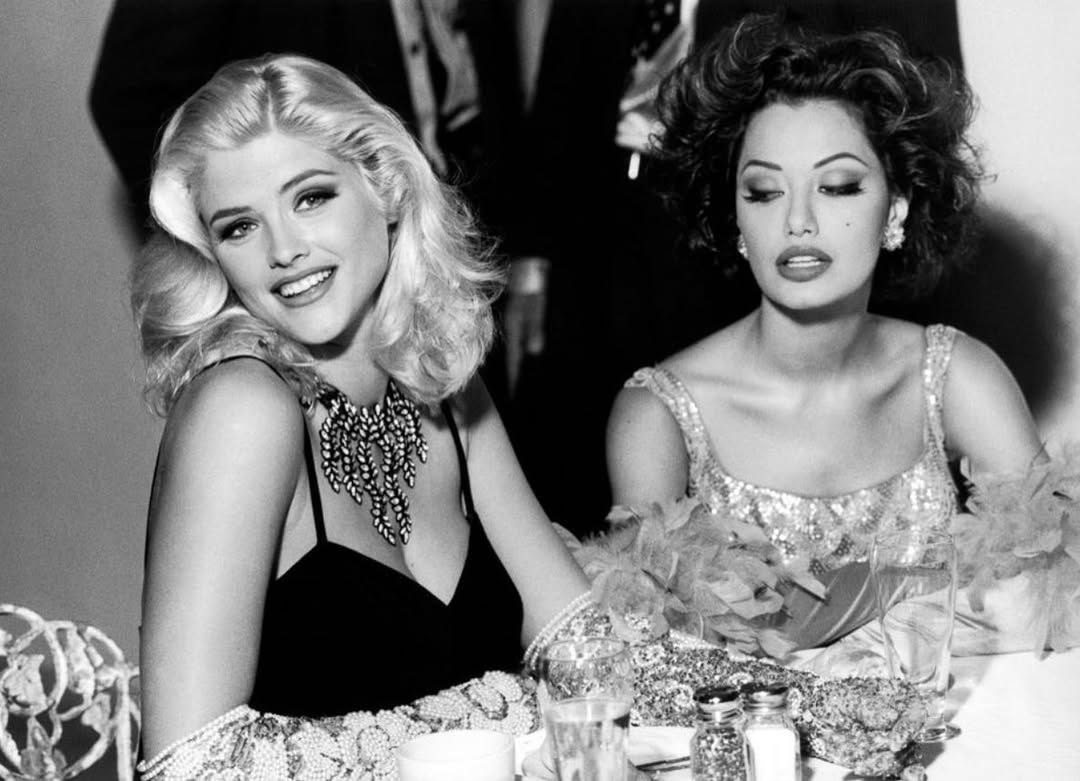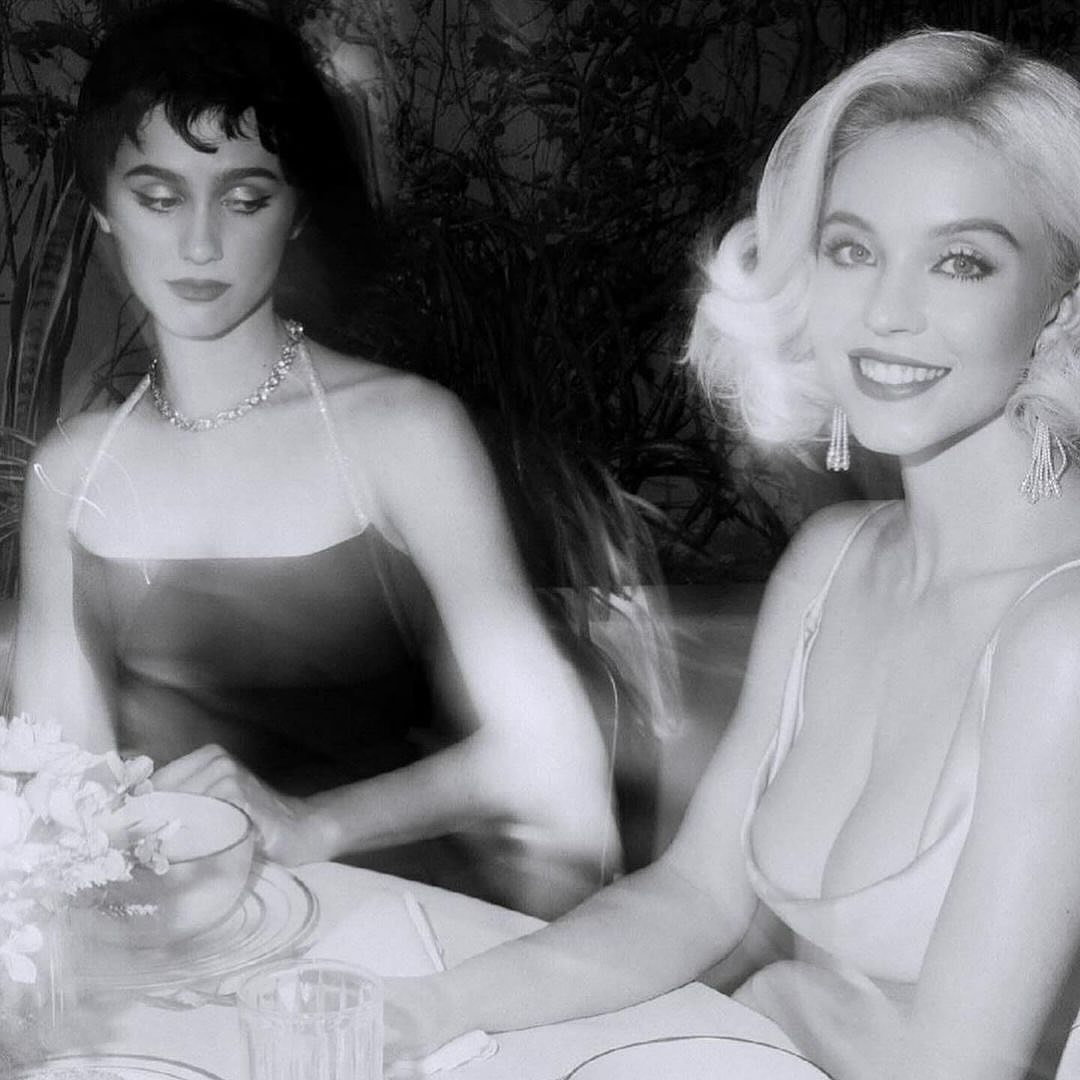
Sophia Loren and Jayne Mansfield at Romanoff’s in 1957
At barely twenty‑two, the dazzling Sofia was already under Paramount’s watchful eye. Its executives, captivated by her performances in Aida (1953) and The Gold of Naples (1953), saw in her the natural successor to the great European figures Hollywood had once embraced: Ingrid Bergman and Marlene Dietrich.
When a young lady of Sofia Loren’s caliber prepared to enter Hollywood’s dreamworld, foxes and beavers trembled, as did otters and ermines. A star in the making would advance wrapped in furs—then emblems of status and refinement—with all the pomp imaginable, like a dark‑haired, incontestable queen whose very passing quickened the nervous flutter of fans. Paramount had placed its bet on her, expecting her to embody a fusion of European sophistication and animal magnetism.
Thus she was awaited on the night of her presentation at Romanoff’s in Beverly Hills, a restaurant that—even without her—was always brimming with actors, directors, producers, and journalists. To hold her welcome dinner there was to usher her directly into Hollywood’s inner circle. Figures of weight were invited—Barbara Stanwyck, Montgomery Clift, Gary Cooper. The studio executives meant to make it clear: they were not there to waste time.
And so, only minutes later than expected and arrayed in the emblems of glamour, she entered, moving with a perfect balance of innocence and stagecraft. She took her seat, and the sparrows of the world seemed to drop to the floor like stones.
It was supposed to be a quiet night, scripted to perfection, but Jayne Mansfield—another star on the rise—burst onto the scene with something close to ferocity. She was no ingénue. She had come to Los Angeles as the blonde destined to rival Marilyn Monroe, and she was more than eager to fulfill her historic mission. She made her grand entrance, determined that no one would forget that night.
She blew protocol to pieces when, after slipping off her coat, she took the seat to Sofia’s left—perhaps to let the crowd better savor that clash of landscapes. Her backless gown with its daring neckline was, in itself, a declaration of war. But Sofia Costanza Brigida Villani Scicolone had survived Mussolini’s fascism… and no blonde was going to ruffle her Roman composure.
In a fleeting instant, her eyes shifted toward the competition, and a fortunate photographer caught—in the exact frame—what would become perhaps the most famous gaze in Hollywood. Mansfield smiles at the camera as though she has just stepped on an incubus, while Loren narrows her eyes into a taut, geometric calculation, a mixture of horror and disbelief. The image has survived time because it crystallizes the epic clash of Europe versus America, brunette versus blonde, lace against battering ram. And in that duel, Sofia’s expression was the sharpest commentary of all. Without uttering a word, she reduced the entire scene to a gesture everyone understands but is almost impossible to describe without the picture itself.
But of course, we try.
The photograph captures the unfolding of a classic scene of scopophilic tension: the need to look and to be looked at. Mansfield offers, with not the slightest shame, a blazing argument—her hyperbolic décolletage. She smiles, pleased, knowing her silhouette is almost ninety percent of the spectacle. For Sofia, her neighbor ceases to be a subject and becomes the bearer of the object that seizes the attention of the entire room. She knows she should not look, yet she cannot help herself. Her gaze—tinged with a hint of reproach—also betrays fascination, alarm, and repression. Freud would leap onto the table to point to it as a prime example of the clash between the id (curiosity, astonishment, even envy) and the superego (struggling not to look and not to judge openly).
Although the image has been dismissed for perpetuating the trope of female rivalry, we can consider it through the lens of psychoanalysis, which would see in it the expression of feminine narcissism as both obstacle and engine of male desire. On one side, Sofia’s restrained, smoldering elegance; on the other, Mansfield’s exuberant explosion. They do not look at each other, yet each unveils her own repertoire. Two opposing modes of seduction: Mansfield embodies the immediate promise of desire; Loren, the art of restraint. She says nothing, yet her silence overflows with commentary impossible to voice.
Because of the circumstances in which it was taken, this image is not anecdotal; it is a revelation of Hollywood’s symptoms as a vast libidinal machine. Yet for decades it has also worked as a joke. And as such it is liberating, because it releases the internal repression provoked by hyper‑sexualization in an inappropriate setting.
What, then, is the photograph’s ultimate value—its perfect pinch of salt, its flawless cook?
It is the smile, the grace, the unheimlich undertone: that unsettling sense of imminence, that a bomb might go off on the table at any moment… Sofia emerged unscathed from the trance. That night behind her, she would go on to win an Oscar for Two Women, while Mansfield would begin her descent into oblivion. Loren—guided by her astute husband Ponti—knew how to navigate the fiercest tides, contracts, and festivals. Mansfield, adrift, chose scandal as her strategy, a choice that could not last.
The photo lives on, reproduced by generations of celebrities seeking to recreate that improbable mix of glamour and danger. Loren wants nothing to do with it. She knows her gaze laid bare the industry’s farce. What would Queen Victoria have said if she’d been at that table?
—One must never forget: a lady’s reputation is her crown… and some crowns, clearly, have slipped far too low.
Like Sofia, I say nothing.















Comments powered by Talkyard.